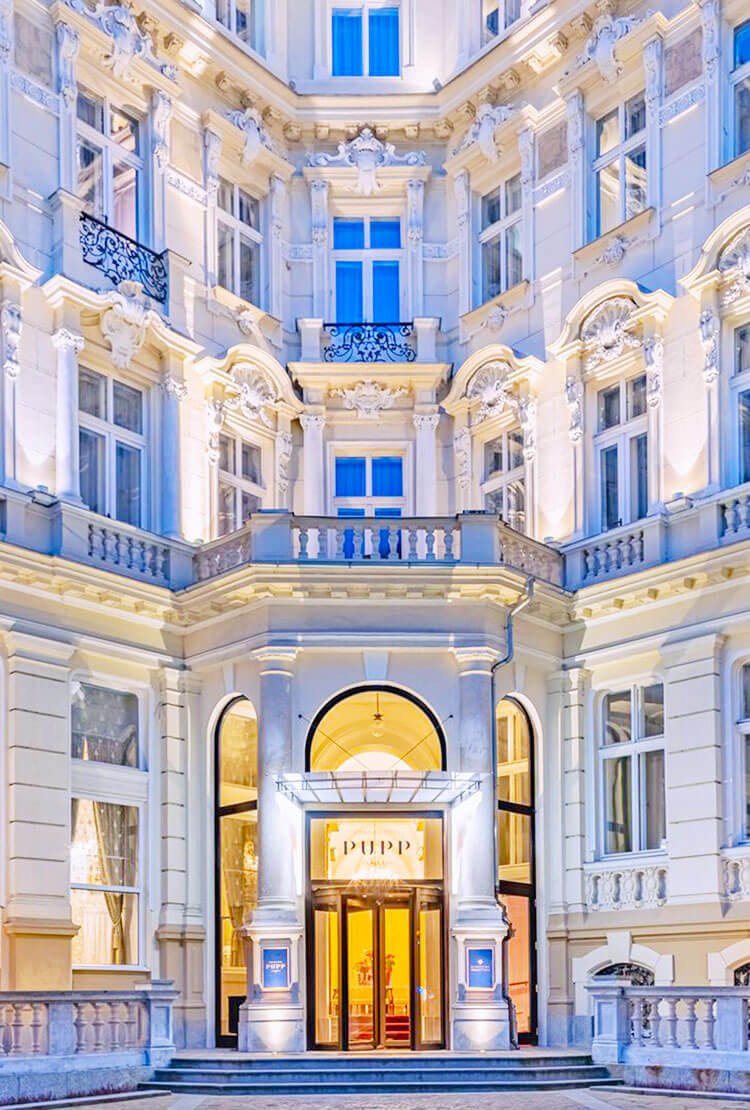Europe’s most historic hotels have a tradition of hospitality that can be traced back centuries. Some were purpose-built for well-heeled travelers who pioneered the idea of a vacation before it became mainstream. Other heritage properties previously served as palaces, convents, or country estates. Now that they are hotels, these exquisite properties are a joy for history-minded travelers to stay in. Discover their colorful pasts and modern-day charms as you check in to six of Europe’s most beautiful historic hotels.
San Domenico Palace Hotel – Taormina, Italy
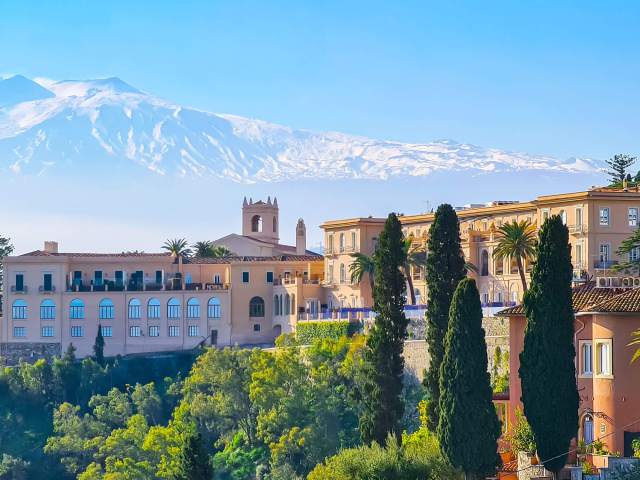
If the San Domenico Palace looks familiar, you’ll perhaps have recognized it from its starring role in the second season of HBO’s hit series The White Lotus. Located on Sicily’s breathtaking east coast, the San Domenico Palace Hotel started life as a 14th-century convent overlooking the Ionian Sea. It has been a luxury hotel since Prince Domenico Rosso di Cerami acquired it in the 1890s.
A roll call of its most illustrious guests includes King Edward VII, Oscar Wilde, Truman Capote, Audrey Hepburn, Elizabeth Taylor, and Sophia Loren. Today, the Four Seasons hotel group is the conservator of its history and has ensured the hotel remains meticulously well-kept inside and out. Don’t miss the glorious treasures in its Sala Della Grande Madia, used for cocktail receptions and functions, or the splendid Italianate garden and infinity pool with views over the stunning coast.
Brown’s Hotel – London, England
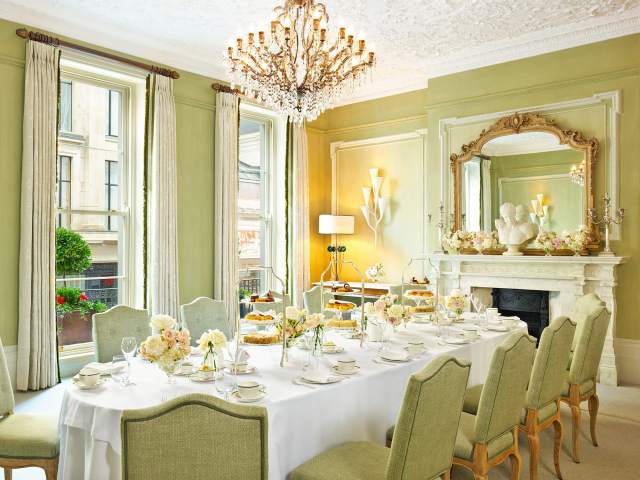
Brown’s Hotel opened its doors in London’s Mayfair neighborhood in 1832, five years before Queen Victoria ascended to the throne. Since then, this storied property has hosted many royals, dignitaries, and celebrities. For instance, in 1876, Alexander Graham Bell made Britain’s first telephone call from the hotel. Teddy Roosevelt stayed at Brown’s on the eve of his wedding to Edith Carow; his niece Eleanor honeymooned here after she married FDR. Brown’s has also long been a favorite of the literati: Author Rudyard Kipling treated it like a second home, a jet-lagged Stephen King drafted the outline of Misery there while unable to sleep, and a host of other novelists — including Agatha Christie, William Golding, and Mark Twain — all booked a stay at some point.
Luxury hotel group Rocco Forte bought the property in 2003, sparing no expense on a lavish renovation. Today, it’s not only one of London’s oldest hotels but also one of its most beautiful, replete with wood paneling, antique furnishings, and glittering chandeliers.
Grand Hotel Pupp – Karlovy Vary, Czechia
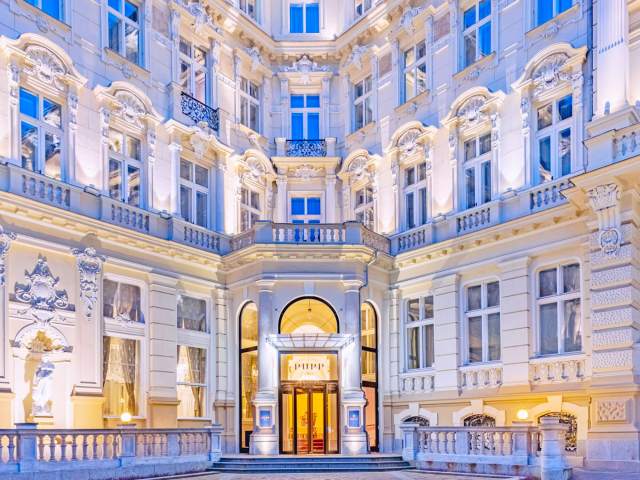
The history of the Grand Hotel Pupp in Karlovy Vary can be traced back three centuries. This magnificent Czech property was originally several separate buildings, the oldest of which was first known as the Saxony Hall and was built in 1701. Under the ownership of the Pupp family, the buildings were transformed into a striking five-star hotel, which remains one of this spa town’s most iconic landmarks.
Light-filled atriums, frescoed ceilings, and crystal chandeliers accented in gold ooze glamor and sophistication. Each of the hotel’s sumptuous rooms and suites, some overlooking the Teplá River, are uniquely decorated. Unsurprisingly, the past guest list is also impressive: Casanova, Peter the Great, Beethoven, Napoleon Bonaparte, Franz Kafka, Haile Selassie, and, more recently, a slew of Hollywood A-listers who come for the annual Karlovy Vary Film Festival. The hotel itself has featured prominently in a number of movies, most famously Casino Royale in the James Bond series. It is also said to be the inspiration for Wes Anderson’s Grand Budapest Hotel.
Grand-Hôtel du Cap-Ferrat – Côte d’Azur, France
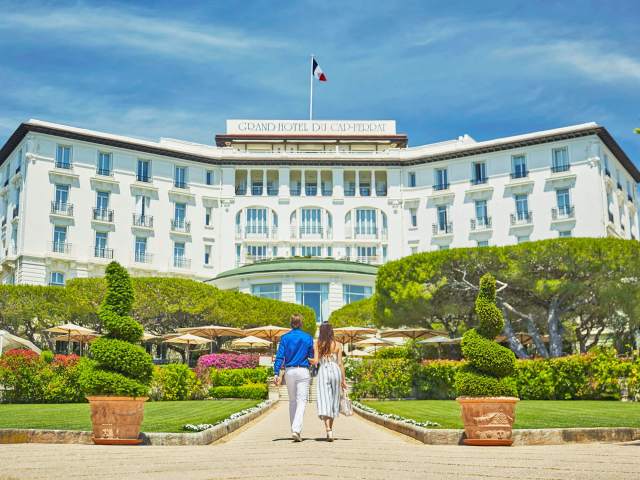
Located between Nice and Monaco, the legendary Grand-Hôtel du Cap-Ferrat occupies a peninsula overlooking the Mediterranean Sea as one of the most sought-after hotels on the French Riviera. The land was previously owned by King Leopold II of Belgium, who sold a 16-acre parcel to a savvy developer who saw its potential for tourism. One of the most-talked about features of the hotel upon opening was the gorgeous bay-windowed rotunda designed by Gustave Eiffel in 1909. Today, it still affords guests a stunning view of the sea beyond Aleppo pines.
More than a century later, the property is owned and managed as a Four Seasons hotel. The clean lines and quality materials used in the Grand-Hôtel du Cap-Ferrat’s spacious suites and villas create an air of refinement. Moreover, the décor — with its calming palette of whites and creams — exudes Gallic chic.
Gasthof Fraundorfer – Garmisch-Partenkirchen, Germany
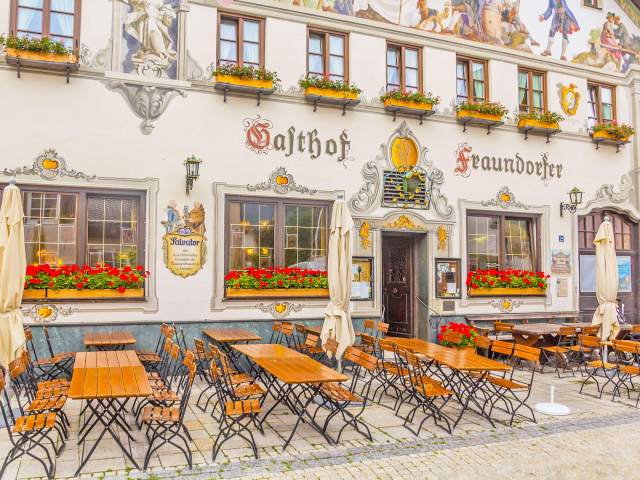
Welcoming guests since 1929, the Gasthof Fraundorfer proves that finding a European hotel that combines history and beauty can be achieved on a more modest budget. You’ll find this charming inn along the famous Ludwigstrasse street in the old town of Garmisch-Partenkirchen, a Bavarian ski resort. Like other villages in this part of Germany, Garmisch-Partenkirchen is known for the pretty murals that adorn exterior walls. They’re called Lüftlmalerei, which loosely translates as “open air paintings.”
One that graces the façade of the Gasthof Fraundorfer was painted in 1928 by Heinrich Bickel, who was one of the most prolific Lüftlmalerei artists in the area. It depicts a wedding feast, incorporating pictures of a bride and groom and their guests. Inside, the rooms at Gasthof Fraundorfer are simply yet beautifully furnished with crisp white linens and, in some cases, rustic wooden ceilings.
Hotel Gellért – Budapest, Hungary
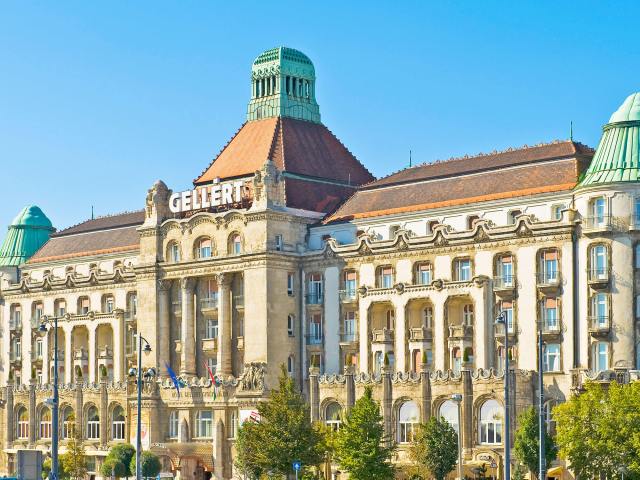
The Hotel Gellért is perched on the banks of the Danube River at the foot of Budapest’s Gellért Hill. The hotel opened in 1918, though it was almost immediately commandeered by the military at this turbulent time in Hungary’s history. Since then, it has become Budapest’s most iconic hotel, treasured by locals and visitors alike. Its Art Nouveau-style architecture boasts beautiful stained glass and wrought-iron decorations typical of the period, while the thermal bath added in 1934 features an expansive glass roof.
Unfortunately, a succession of owners have stripped away parts of its heritage, ripping out some of its historic features in the name of modernization. All that looks set to change, however, as the hotel is currently undergoing an extensive remodel before it reopens in 2027 under the Mandarin Oriental umbrella. According to a recent report, the hotel group intends to faithfully restore the Gellért to its former glory using old photographs and plans to recreate the original lobby and several other historic rooms.
Note: All featured products and deals are selected independently and objectively by the author. Daily Passport may receive a share of sales via affiliate links in content.
More from our network
Daily Passport is part of Inbox Studio, which publishes content that uplifts, informs, and inspires.






